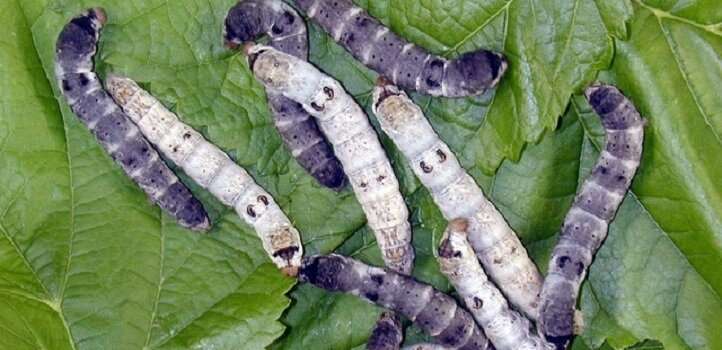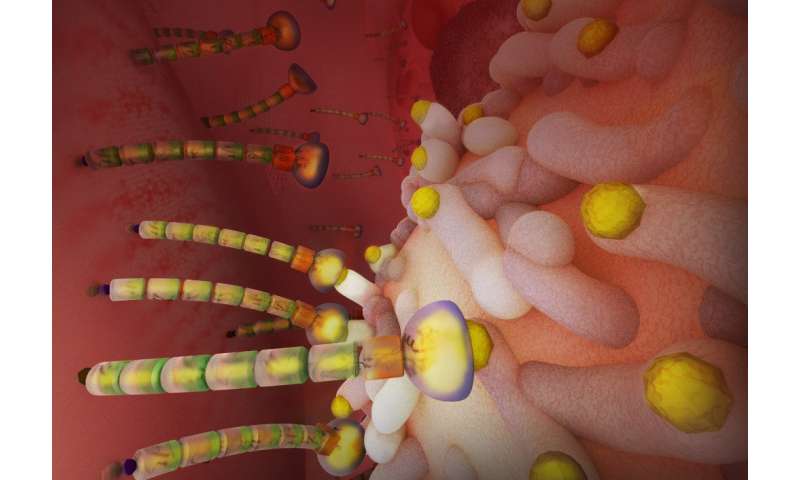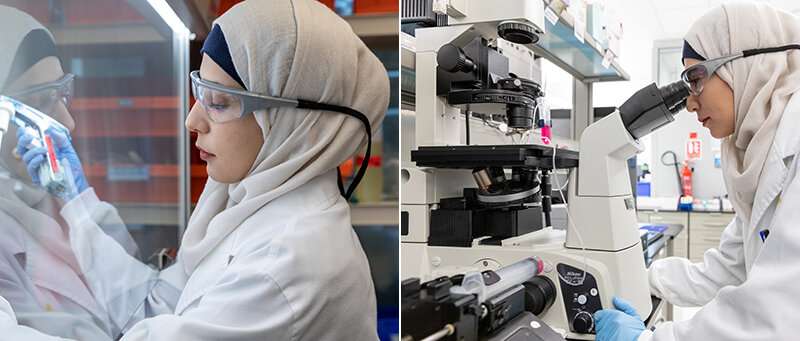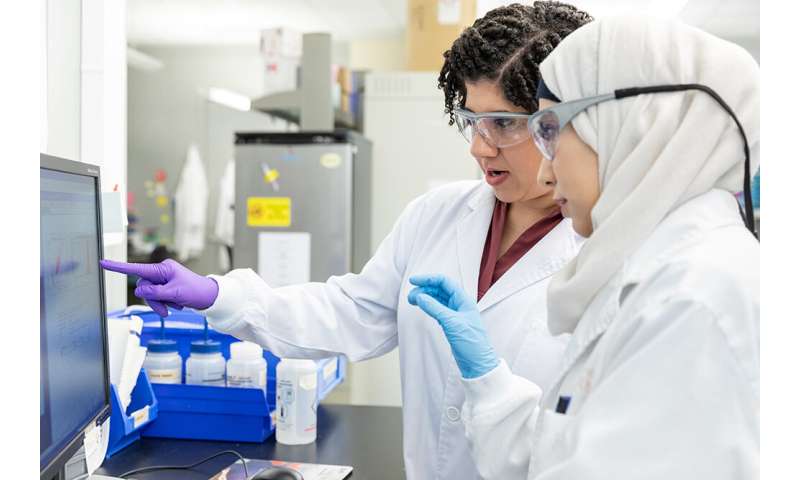Silkworms provide new spin on sticky molecules

Silkworms are useful for more than just making strong and absorbent strings of silky thread for the textiles industry. A group of KAUST scientists has now coaxed these grub-like insects into making the human form of E-selectin, a critical adhesion molecule involved in inflammation, cancer and other disease processes.
Working with collaborators at Kyushu University in Japan, biochemist Jasmeen Merzaban and her team engineered silkworms to produce different variants of E-selectin. They then studied how the various adhesion proteins interacted with cells, discovering that there is more to E-selectin's molecular stickiness than how its terminal binding domain interacts with target molecules.
For the first time, they have shown that critical for binding is the connecting arm of E-selectin —a repetitive region of variable length (known as the short consensus repeat domain) that extends the protein's hand to grab cells out of flow.
Longer armed E-selectins are better at tethering blood stem cells, Merzaban and her colleagues report. But the speed with which E-selectin grabs the cells seems controlled only by the protein's hand and wrist—the lectin and the epidermal growth-factor-like domains, respectively.
The findings shed light on the natural trafficking of blood components into and out of tissues. They might also explain how rogue cancer cells in the blood get captured at distant organs to seed new tumors throughout the body.
-

E-selectin is a repetitive region of variable length that extends the protein’s hand to grab cells out of flow. Credit: KAUST; Heno Hwang -

First author of the study, Fajr Aleisa, prepares a sample of cells (left) and observes the ability of components of the E-selectin molecule to block adhesion interactions. Credit: KAUST -

Jasmeen Merzaban (back) and Fajr Aleisa discuss the results of their silkworm expression system. Credit: KAUST
"Evaluating the ability of components of the E-selectin molecule to block adhesion interactions based on our work could generate results with therapeutic implications," Merzaban says.
She and members of her are currently exploring the potential for lab-grown E-selectin proteins to serve as decoys in the body. These molecules should get between cancer cells and natural E-selectins found in blood vessels or in the bone marrow, and thereby reduce the rate of metastasis, the main cause of cancer-related death, or prevent tumor cells from hiding away in organs where they are protected from chemotherapy.
To manufacture more E-selectin, the team will again rear huge numbers of transgenic creamy white silkworms. Other options for large-scale protein production abound, including the use of Chinese hamster ovary cells and bacterial culture systems. But rodent cells can be expensive and inefficient in making recombinant proteins and bacteria cannot always faithfully replicate aspects of mammalian protein biology.
"The silkworm expression system presents the advantage of producing functional mammalian proteins at large scale with high yields at low cost," says Fajr Aleisa, the first author of the study and a former Ph.D. student in Merzaban's lab group.
More information: Fajr A. Aleisa et al. Functional binding of E-selectin to its ligands is enhanced by structural features beyond its lectin domain, Journal of Biological Chemistry (2020). DOI: 10.1074/jbc.RA119.010910
Journal information: Journal of Biological Chemistry




















